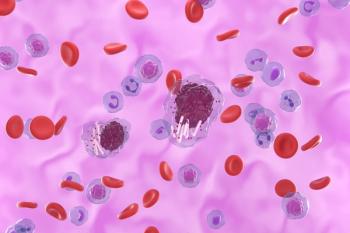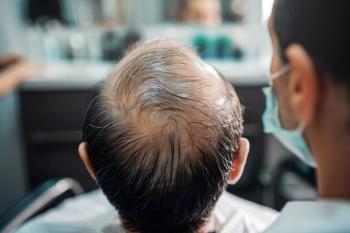
Pediatric Hidradenitis Suppurativa Linked to Gut Microbiome Dysregulation, Mental Health Connections
Key Takeaways
- Pediatric patients with hidradenitis suppurativa show gut microbiome dysregulation, with decreased α diversity and increased specific bacterial genera compared with controls.
- B adolescentis, linked to anxiety and depression, is present in pediatric patients with hidradenitis suppurativa but absent in adults, suggesting a potential mental health connection.
Significant differences in gut microbiome composition were found among pediatric patients with hidradenitis suppurativa, suggesting further investigation surrounding gut microbiome dysregulation.
Pediatric patients with hidradenitis suppurativa may experience gut microbiome dysregulation, which could link to mental disorders by directly modulating neural signals from the gut, but further research is required, according to a study published in JAMA Dermatology.1
Hidradenitis suppurativa is a chronic inflammatory
Researchers conducted a prospective observational study to analyze the gut microbiome in 8 patients with hidradenitis suppurativa and 8 matched controls, focusing on the pediatric population.1 Both hidradenitis suppurativa and inflammatory bowel disease (IBD) share common clinical manifestations, genetic susceptibility, and immunologic features.3 Each disease has a clinical manifestation in the skin and the gut, characterized by sterile abscesses in the perineal and inguinal areas, scarring, and sinus tract formation.
Researchers collected fecal samples from both study groups and found similar read counts and no appreciable differences in β diversity.1 Participants with hidradenitis suppurativa showed a decrease in α diversity compared with the control group, which measured microbial diversity within an individual’s gut microbiome.
There were increases in the Ruminococcus genera, Clostridium genera, and B adolescentis in pediatric patients with hidradenitis suppurativa compared with adults with the same condition. The 2 groups did not have any differences in α diversity.
A principal coordinate analysis identified differences in phylogenetic profiles between the groups, as pediatric control participants (n = 5) clustered more tightly than pediatric participants with hidradenitis suppurativa (n = 4). The study found no significant differences in α diversity among pediatric patients with hidradenitis suppurativa and controls. Additionally, the researchers observed an increased presence of the Bacteroidetes phyla in pediatric participants with hidradenitis suppurativa compared with controls.
After comparing genera between the groups, researchers found an increase in an unknown genus from the Ruminococcaceae family and the Bilophila genus in pediatric patients with hidradenitis suppurativa. Faecalibacterium prausnitzii, a beneficial bacterial species, increased in pediatric patients with hidradenitis suppurativa compared with controls.
The study indicates the presence of gut dysbiosis, which aligns with previous research, and shows increases in Bilophila in patients with hidradenitis suppurativa. Interestingly, every adult with hidradenitis suppurativa in the study did not have B adolescentis bacteria but all pediatric patients with the condition had it.
B adolescentis is linked to anxiety and depression disorders through direct modulation of neural signals from the gut. Future studies could benefit from incorporating mental health screenings to assess these correlations. Unaddressed mental health challenges can lead to substance abuse patterns, as individuals may seek to reduce pain through various mechanisms.4 Substances like alcohol and opioids can ultimately exacerbate hidradenitis suppurativa while also creating additional challenges.
“We found significant differences in gut microbiome composition of pediatric patients with hidradenitis suppurativa compared with pediatric control participants and adult patients with hidradenitis suppurativa, suggesting gut microbiome dysregulation may extend to pediatric patients with hidradenitis suppurativa and should be investigated further,” study authors concluded.
References
1. Collard M, Grbic N, Mumber H, Wyant WA, Shen L, Alani RM. Gut microbiome in adult and pediatric patients with hidradenitis suppurativa. JAMA Dermatol. Published online May 28, 2025. doi:10.1001/jamadermatol.2025.1318
2. Santoro C. Hidradenitis suppurativa: advancing treatment with biologics. AJMC®. January 12, 2025. Accessed May 27, 2025.
3. Chen W, Chi C. Association of hidradenitis suppurativa with inflammatory bowel disease: a systematic review and meta-analysis. JAMA Dermatol. 2019;155(9):1022–1027. doi:10.1001/jamadermatol.2019.0891
4. Caccavale S, Tancredi V, Boccellino MP, Babino G, Fulgione E, Argenziano G. Hidradenitis suppurativa burdens on mental health: a literature review of associated psychiatric disorders and their pathogenesis. Life (Basel). 2023;13(1):189. doi:10.3390/life13010189
Newsletter
Stay ahead of policy, cost, and value—subscribe to AJMC for expert insights at the intersection of clinical care and health economics.









































